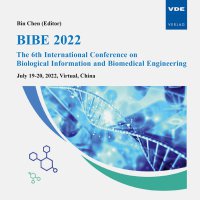Fusing deep learning models for subjective cognitive decline recognition via structural and functional MRI data
Konferenz: BIBE 2022 - The 6th International Conference on Biological Information and Biomedical Engineering
19.06.2022 - 20.06.202 in Virtual, China
Tagungsband: BIBE 2022
Seiten: 6Sprache: EnglischTyp: PDF
Autoren:
Zhang, Zhao; Xin, Jiaming; Li, Guangfei; Tang, Xiaoying (Department of Biomedical engineering, School of Life Sciences, Beijing Institute of Technology, Beijing, China)
Inhalt:
Subjective cognitive decline (SCD) is the preclinical stage of Alzheimer's disease (AD). The early recognition of SCD is of great significance for the prevention of AD. For this study, we enrolled 69 patients with SCD and 75 normal controls (NC). According to the structural characteristics of T1 data, 3D-Resnet, 3D-densenet, and Swin Transformer (Swin-T) are used for classification. Due to the timing nature of BOLD data, RNN, LSTM, and Bi-LSTM are used for classification. Swin-T achieved the best results in the model with T1 data as input, while Bi-LSTM achieved the best results in the model with BOLD signal as input. Based on the above results, we fuse Swin-T and Bi-LSTM and use T1 and BOLD data as input. The fused model achieved better results than a single model with a separate T1 image or a separate BOLD signal as input. Of the 29 test sets, 23 were correctly classified. Although sensitivity was 75.0%, specificity was achieved at 84.6%. The F1-Score was also the highest among all models at 80.0%, and the AUC was 81.0%. The contribution of this study lies in the fusion of T1 mode data and BOLD mode data, providing ideas for SCD diagnosis.


